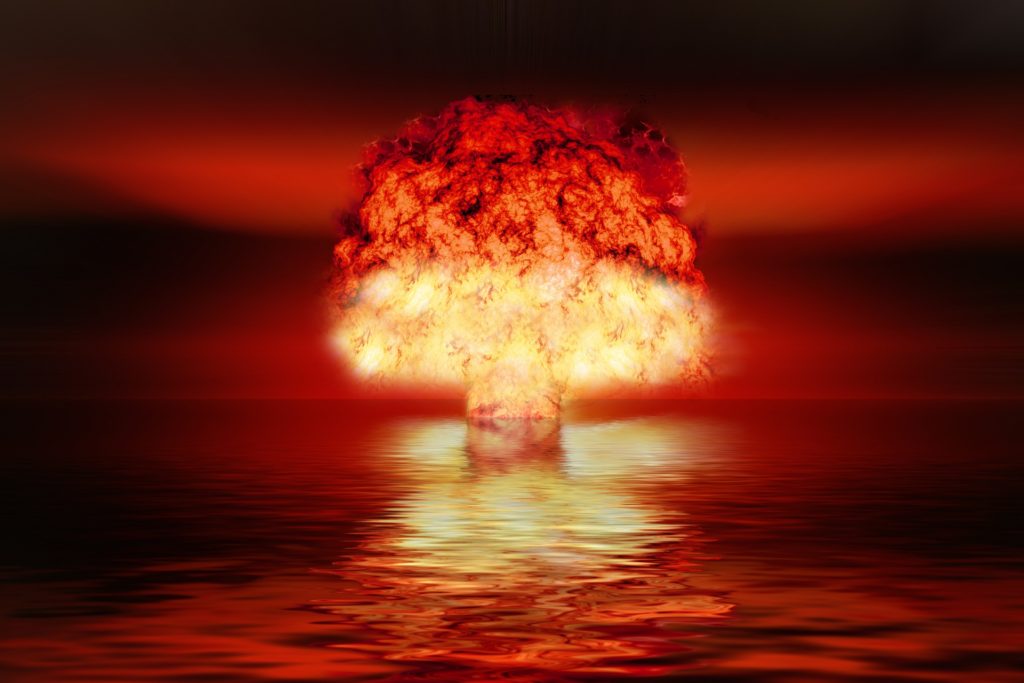
By James E. Doyle, 12/15/20, The Bulletin
In October, the Wall Street Journal reported that the United States and Russia were nearing an arms control agreement that would freeze the number of nuclear warheads on each side and extend the New Strategic Arms Reduction Treaty (New START) for a year.
Although the report proved to be incorrect in its conclusion that Russia and the United States were about to reach their first nuclear arms control agreement in more than a decade, the simple fact that the United States and Russia were formally negotiating an extension to New START was grounds for optimism. What was most remarkable was that the sides were discussing a verifiable freeze on the total number of nuclear warheads in their arsenals. This has never been done before. In fact, neither side has ever told the other how many nuclear warheads it possesses.
Nuclear arms control agreements up to now have only directly limited the nuclear warhead delivery vehicles (land-based missiles, submarine-based missiles, and aircraft) and not the warheads themselves. New START, for example, limits the number of strategic nuclear warheads deployed by each side to 1,550 and the number of deployed delivery vehicles to 700. It entered into force in February 2011 and will expire in February 2021 unless both sides agree to extend its duration by up to five years. New START does not, however, cover thousands of non-deployed or non-strategic nuclear warheads on both sides. That is, a warhead is considered a warhead under the treaty only if it is deployed—even though each side has thousands that are not deployed.
October was a long time ago. Since then, negotiations led by the Trump administration have collapsed, and Joe Biden has become the president-elect. All indicators suggest he intends to extend New START without any new conditions.
But that does not rule out the possibility of an agreement to freeze or reduce warheads in follow-on talks. If such an agreement were reached—one that allowed both sides to know their total nuclear warhead inventories, and to verify a cap or reduction to those inventories—it would be a political, technical, and diplomatic achievement unprecedented in the history of nuclear arms control.
The incoming Biden administration is likely to pursue a world with fewer nuclear weapons and perhaps sketch the first steps on a road to zero. Verifying warhead inventories and their eventual dismantlement is essential to this objective. Overcoming the political and technical challenges of warhead arms control is a daunting task that will require expanded and sustained effort.
Fortunately, scientists and strategic planners in several nations possessing nuclear weapons have been investigating the practical requirements of nuclear warhead arms control for more than 25 years, and much progress has been made. Several candidate technologies and procedural approaches for verifying the storage and dismantlement of nuclear warheads exist. However, these potential solutions need further technical development to be successfully used in the context of a future international treaty. To make nuclear warhead arms control a reality, President-elect Biden’s national security team will need to launch a strategic verification initiative and coordinate the cooperation of the US interagency community and key international partners.
The challenges of warhead arms control. It remains profoundly in the security interests of the United States, Russia, and the rest of the world to aggressively develop a safe and reliable means to verify a potential nuclear weapons freeze and additional reductions to global nuclear arsenals. First, because of their immense destructiveness, the effects of nuclear weapons cannot be limited to the nations that use them in a potential conflict. The use of even a handful of nuclear weapons would cause worldwide human suffering. The risk of nuclear war remains unacceptably high and has been joined by a nexus of global threats, such as pandemics, climate change, and terrorism, against which nuclear weapons provide no defense.
Second, the United States and Russia, as members of the 1970 Nuclear Non-Proliferation Treaty, are obligated along with all nations possessing nuclear weapons (except India, Pakistan, Israel, and North Korea, who are not party to the treaty) to work toward the eventual elimination of nuclear weapons.
Third, 50 nations have already declared their willingness to make the possession of nuclear weapons illegal under international law. They did so by ratifying the 2017 Treaty on the Prohibition of Nuclear Weapons. The treaty will enter into force in January 2021. None of the states possessing nuclear weapons has joined the treaty. However, as more countries join on and become bound by its terms, the more powerful their argument will be that their millions of citizens are being unjustifiably endangered by the tiny minority of states that claim the right to possess and use nuclear weapons.
Thankfully, the number of nuclear warheads in the world has declined significantly since the Cold War, down from a peak of approximately 70,300 in 1986 to an estimated 13,410 in early 2020. Nearly all of these reductions in nuclear warheads have been unverified—they were declared to have taken place by the countries that built them, but never confirmed by any international authority.
There is reasonable confidence that the Russian reductions have indeed taken place because US officials have been able, by means of national intelligence, arms control inspections, and other cooperative agreements, to verify the dismantlement of thousands of missiles, submarines, and bomber aircraft that once carried the larger arsenals of warheads. The outside world has also been able to observe with satellite and other imagery the movement of highly secure convoys of trains and trucks taking surplus nuclear warheads to national storage sites and dismantlement factories. Additionally, Russia sold the United States hundreds of tons of highly enriched uranium that came from retired and dismantled nuclear warheads. Finally, these same intelligence capabilities enable US officials to see that Russia has not added to its stockpile of fissile materials for the construction of new warheads.
But there is still a good deal of uncertainty regarding Russia’s total inventory of nuclear warheads and whether it plans to manufacture more. Nor are US officials sure how many nuclear warheads are possessed by China, India, France, the United Kingdom, Pakistan, Israel, or North Korea—and these countries, in turn, cannot independently verify the United States’ declarations of its warhead inventories.
Continue reading here.


